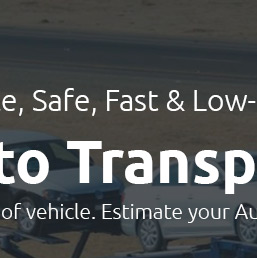 |
|
||||
 |
 |
 |
 |
||
 |
 |
|||||
 |
 |
 |
 |
 |
 |
 |
||
 |
 |
 |
 |
 |
 |
 |
 |
 |
 |
 |
|
 |
Shipping a Car from Houston to San Francisco: What to ExpectTransporting a vehicle across state lines, particularly from a bustling city like Houston to the picturesque streets of San Francisco, is a task that many undertake for various reasons, be it relocation, selling, or simply the desire to have one’s own car during an extended stay. The process, while seemingly daunting, can be navigated with relative ease when one is armed with the right information. Here, we delve into the intricacies of car shipping, offering insights that could make the journey smoother. First and foremost, choosing the right shipping company is pivotal. With a myriad of options available, it's imperative to conduct thorough research. Look for companies with robust reviews, transparent pricing, and a track record of reliability. It's advisable to obtain quotes from at least three different providers to gauge the market rate and ensure competitive pricing. Remember, the cheapest option is not always the best; consider factors like insurance coverage and delivery timeframes. When it comes to pricing, several variables come into play. The distance between Houston and San Francisco, approximately 1,900 miles, sets a baseline for costs. However, the type of vehicle, its condition, and the chosen shipping method (open vs. enclosed transport) can significantly influence the final price. Open transport, where the car is shipped on an open-air trailer, is generally less expensive but exposes the vehicle to the elements. In contrast, enclosed transport offers more protection but comes at a premium. Timing is another crucial factor to consider. Typically, shipping a car across this distance can take anywhere from one to two weeks. Planning ahead is advisable, especially if you have a strict timeline. Seasonal fluctuations can also affect both price and availability; for instance, demand tends to peak during summer months and around holidays, potentially leading to delays. Before handing over your vehicle, a thorough inspection is essential. Document its condition with detailed photographs and notes, as this will serve as a crucial reference in the unlikely event of damage during transit. Reputable companies will conduct their own inspection and provide a report, but having your own records is a prudent step. It's also wise to remove any personal belongings from the car, as these are generally not covered by the carrier's insurance. On the topic of insurance, verify the coverage offered by the shipping company. While all carriers are required to have liability insurance, the extent of coverage can vary. It may be worth investing in additional insurance for peace of mind, particularly if your car is high-value. Upon arrival in San Francisco, conduct another inspection with the delivery agent. Check for any discrepancies against the pre-shipping condition report. If issues arise, document them immediately and contact the shipping company to file a claim. Ultimately, shipping a car from Houston to San Francisco is a manageable endeavor with the right preparation. By selecting a reputable company, understanding the pricing structure, and diligently inspecting your vehicle, you can ensure a smooth transition from the heart of Texas to the cultural haven of California. In conclusion, while the task of shipping a car might seem overwhelming at first glance, it is, in reality, a well-trodden path with plenty of resources and professional services to guide you. Approach the process with due diligence, and you will find it an efficient means to have your vehicle ready to traverse the iconic hills and breathtaking scenery of San Francisco. https://freedomautotransport.com/auto-transport-routes/houston-texas-to-san-francisco-california.php
There is no specific set fee, it's completely at the driver's discretion. But we have found that $50-$100 usually takes care of any additional items that you ... https://www.jandstransport.com/routes/cities/san-francisco-california-vehicle-shipping/
Are you looking for a San Francisco Vehicle Shipping company? Look no further than J&S Transportation. We've been shipping vehicles to and from San Francisco, ... https://www.amerifreight.net/texas-to-california-car-shipping
San Jose. Whether you need to ship your car from Houston to Los Angeles or from Dallas to San Francisco, AmeriFreight has you covered with reliable and ...
|
